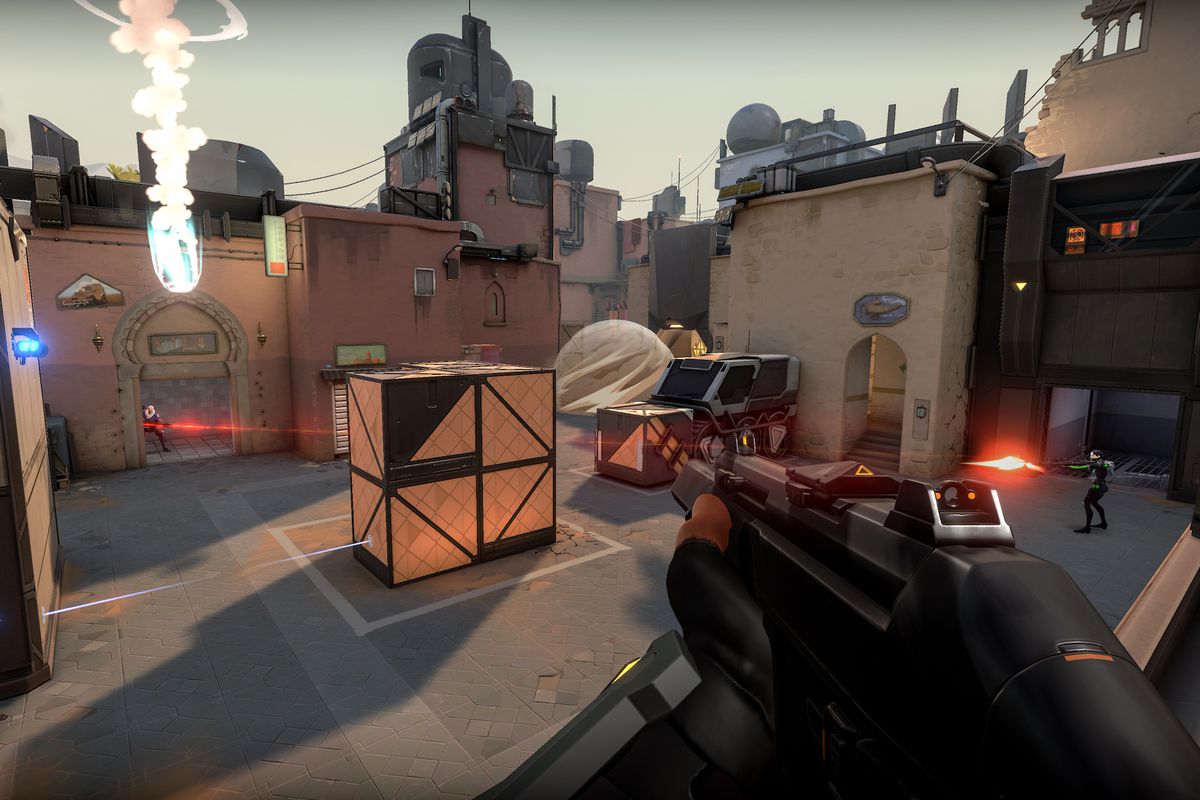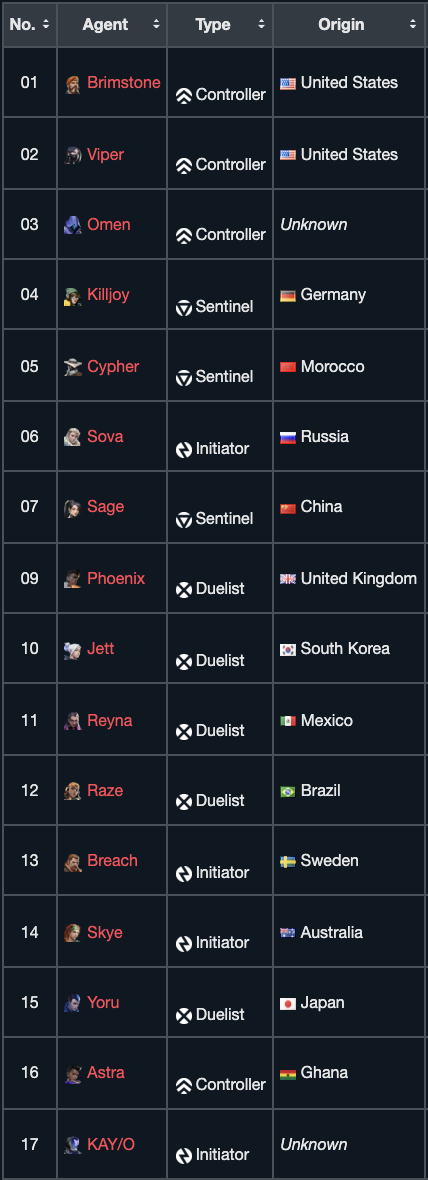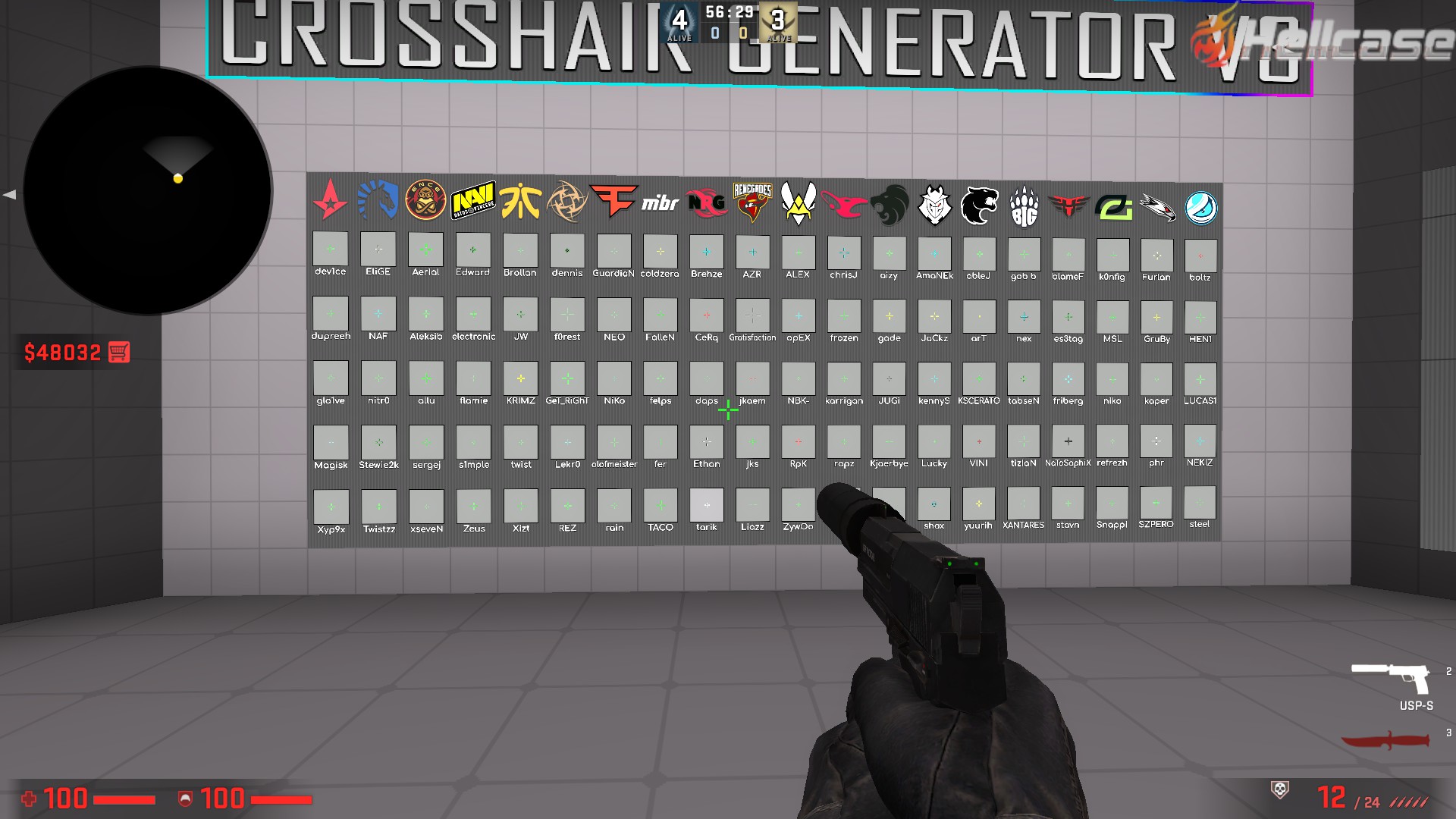Is Valorant the new CS:GO?
Valorant is the newest first-person shooter game on the block but can it compare to a classic like CS:GO? Shajahan Mohd finds out more.
Valorant released in beta. Photo taken from dotesports.com.
BY
Shajahan Mohd
Editorial Admin
Hype Issue #53
Published on
July 26, 2021
I remember the times when I would come home after school and rush to my computer just to play CS:GO (Counter-Strike Global Offensive) on a decent 70 FPS together with my friends. The theme music, the voice lines, the gunfire sounds are all things that have been ingrained within me as a CS:GO player.
When Riot games, the developers of League of Legends, released Valorant in June 2020, it didn’t really catch my attention. I just couldn’t see how the game would be much better than CS:GO, but that all changed when my friends convinced me to play it for the first time.
The game started to pick up a lot of attention when the beta version was first released on Apr 7, 2020. Within the first year of its official release, the game managed to reach an average of 14 million players around the world.

Valorant released in beta. Photo taken from dotesports.com.
Granted, CS:GO has an average of 35 million players around the world playing the game, but we also need to consider that CS:GO was released nearly nine years ago and is part of the Counter Strike franchise, with the first game having been released in 2000.
Valorant has a very similar concept to CS:GO. In addition to shooting mechanics, they are also similar in gameplay.
Both games pit two teams of five against each other, are free to play, and are first-person shooter games with the same objectives: to plant/defuse the bomb successfully or kill the enemy team.
What makes Valorant different from CS:GO is the fact that each player is now equipped with unique abilities, depending on the agent that they play.
It is, in a sentence, a happy marriage between Overwatch (another popular FPS shooter game) and CS:GO.
Specifications wise, both games take pride in being able to run with very minimal specifications (30 FPS), although CS:GO would be easier to run because of the need for less RAM and VRAM.
CS:GO
- Intel Core 2 Duo or AMD equivalent
- 2 GB of RAM
- 15 GB of internal storage
- GPU with at least 256 MB
- DirectX 9 compatibility
Valorant
- Intel Core 2 Duo or AMD equivalent
- 4 GB of RAM
- 15 GB of internal storage
- GPU with at least 1GB
- DirectX 9 compatibility
What I like about Valorant
There are quite a number of things that I was pleasantly surprised by when I first played Valorant .
Agents
Valorant is different from CS:GO mainly because of the addition of agents with unique abilities. There are a total of 15 agents, each with their own strengths that are suited for different play styles. The agents are split into four classes for people to understand their strengths.

Each Valorant agent and their roles (type). Photo taken from fandom.com.
I personally found the addition of abilities to be a very desirable part of the game as it allows for more creative strategies in terms of competitive gameplay.
Unlike CS:GO, players are not limited only to their shooting mechanics and game sense to win rounds. For example, many Valorant agents have post-plant abilities or entry utilities to aid them.
Agents also allow players to use their strengths wisely. For example, if you are someone with good accuracy and knows how to clear a site, choosing a duelist agent would be more beneficial you.
If you are someone that has a more passive playstyle and prefers helping your team by locking down areas of contention, choosing a sentinel agent in order to support your team might be more suitable for you.
This is in sharp contrast to CS:GO, where everyone is forced to play with the same skill set and does not allow players to play to their strengths.
Less punishing shooting mechanics
Unlike CS:GO, Valorant is less harsh to those who have not mastered basic shooting mechanics. This can be seen in the inclusion of ADS (aim down sights) on rifles and SMGs, even though the rate of fire is slower and the accuracy diminishes more in comparison to Hip-firing (firing a weapon without aiming down the sights or scope).
Movement mechanics such as counter-strafing are also less punishing in a game like Valorant, as compared to CS:GO.
Animations and aesthetics
Although Valorant does have a limited map pool, all their maps are detailed and have a slightly cartoony feel to them.
Some maps even have futuristic features in them, including teleportation stations. This allows for even more creative gameplay strategies.

Maps available in Valorant. Photos taken from fandom.com.
The animations when each agent uses their abilities are also very distinct and clear such that there is no confusion in terms of who has just used their ability.
Since Valorant is a free-to-play game, their profits mostly come from their extensive line of purchasable weapons skins and battlespasses released every season.
In my opinion, the purchasable weapon skins in Valorant are also much more impressive than those of CS:GO because Valorant has a variety of styles ranging from simple and minimalistic, to vibrant and colorful. Many of them even have some kind of animation and sound effects to them.
Not to mention, Valorant also has impressive ‘finisher’ animations for skins that will play out when you kill the last person. This is unlike CS:GO, where the most you can do is to assign an album or a song via a music kit.
Storyline and personality
Valorant is a game that takes place in the near future after an event called the ‘First Light’, where ‘radianite’ was discovered . This discovery led to great improvements in areas such as like technology, and allowed. However, it also led to some selected individuals to gain abilities from it. That was how the agents were formed.
One of the best features that I like about Valorant is the fact that the game has somewhat of a storyline and lore behind it, and that each agent has a very distinct personality to them.
This can be seen in the in-game voice lines. For example, agents such as Phoenix and Raze are very playful and have a happy-go-lucky nature while agents like Omen, Viper and Reyna have very cold and dark personalities.
I also like how characters interact with their allies in-game using their voice lines, especially before and after each round.
For example, Phoenix might say something like: “Hey Reyna, how old are you? No shade, you look great…but, like, sometimes you say the strangest things,” before starting a round.
He might also say something like: “Don’t wanna take you out Sage… but I gotta” to the enemy Sage at the start of the round.
The animations when each agent uses their abilities are also very distinct and clear such that there is no confusion in terms of who has just used their ability.
Since Valorant is a free-to-play game, their profits mostly come from their extensive line of purchasable weapons skins and battlespasses released every season.
In my opinion, the purchasable weapon skins in Valorant are also much more impressive than those of CS:GO because Valorant has a variety of styles ranging from simple and minimalistic, to vibrant and colorful. Many of them even have some kind of animation and sound effects to them.
Not to mention, Valorant also has impressive ‘finisher’ animations for skins that will play out when you kill the last person. This is unlike CS:GO, where the most you can do is to assign an album or a song via a music kit.
What I do not like about Valorant
The leniency
Although Valorant is generally more lenient than CS:GO when it comes to shooting mechanics, it can sometimes get a little too lenient.
This can be seen in the games whenby players can ‘run and gun’ with weapons and still manage to land many lucky shots on the enemy teams. Even with counter strafing, the action of using small stopping points to land accurate shots, the first shot accuracy can sometimes still be a hit or miss.
This is made worse by the fact that players can now use their abilities to compensate for their lack of proficiency in shooting mechanics, especially in post-plant scenarios.
In addition, unlike CS:GO, the weapons in Valorant use a semi-random recoil system where the vertical recoil stays somewhat consistent, while the horizontal recoil is random.
This makes it difficult to control your recoil accurately, especially with a weapon like the Vandal, which is the equivalent of an AK-47 in CS:GO.
Therefore, unlike CS:GO, Valorant players cannot rely completely on muscle memory. Instead, they have to look out for where the bullet tracers go after a few bullets.
Lack of community-generated content (In-game)
Unlike CS:GO, Valorant is extremely limited in terms of infrastructure that can allow players to add value to the game.
For example, CS:GO allows players to create their own servers to play their own maps to practice different game mechanics. Examples of such maps include bunny hop, one versus one, crosshair generator and even surfing maps.

Crashz crosshair generator map. Photo taken from csgoguru.com.
In contrast, the only flexibility that Valorant has are game modes like snowball, escalation and custom games.
Even in custom games, players are limited in terms of customisability because Valorant has a limit to the changing of features
This is in sharp contrast to CS:GO that has the ‘console’ enabled for players to change a lot more settings when they are in custom maps.
Conclusion
To sum up, is Valorant the new CS:GO? I personally do not think so.
Don’t get me wrong, Valorant really is fun, and on a standalone basis I would definitely give it a 4/5 stars. I really do recommend it to anyone who has a love for first-person shooter games and creative gameplay strategies.
I especially recommend it because I love the concept of agents having abilities and how it allows for more diverse and creative gameplays with each agent.
However, I personally feel that the game is heavily derived from games like CS:GO and Overwatch.
In contrast, CS:GO is a classic shooter game that has stayed true to its roots consistently, from the first release of CS (Counter-Strike) in 2000 to the CS:GO we know and love today.
It is this consistency, simplicity and straightforwardness that many players love about the game.
So, which team are you on? Team Valorant or Team CS:GO?
Leave it in the comments section below!

Thank you for your sharing. I am worried that I lack creative ideas. It is your article that makes me full of hope. Thank you. But, I have a question, can you help me? https://accounts.binance.com/pt-PT/register?ref=V2H9AFPY
outdoor seaside cafe ambience
Thank you very much for sharing, I learned a lot from your article. Very cool. Thanks. nimabi
smooth jazz music
jazz instrumental music
Thanks for sharing. I read many of your blog posts, cool, your blog is very good.
… [Trackback]
[…] Find More Info here to that Topic: hypesingapore.com/index.php/2021/07/27/is-valorant-the-new-csgo/ […]
… [Trackback]
[…] Find More Information here to that Topic: hypesingapore.com/index.php/2021/07/27/is-valorant-the-new-csgo/ […]
… [Trackback]
[…] There you will find 28724 more Information on that Topic: hypesingapore.com/index.php/2021/07/27/is-valorant-the-new-csgo/ […]
… [Trackback]
[…] Info to that Topic: hypesingapore.com/index.php/2021/07/27/is-valorant-the-new-csgo/ […]
… [Trackback]
[…] Read More on that Topic: hypesingapore.com/index.php/2021/07/27/is-valorant-the-new-csgo/ […]
Thanks for sharing. I read many of your blog posts, cool, your blog is very good. https://www.binance.com/tr/register?ref=W0BCQMF1
… [Trackback]
[…] Here you will find 61988 additional Info to that Topic: hypesingapore.com/index.php/2021/07/27/is-valorant-the-new-csgo/ […]
Thank you for your sharing. I am worried that I lack creative ideas. It is your article that makes me full of hope. Thank you. But, I have a question, can you help me?
… [Trackback]
[…] Read More Information here on that Topic: hypesingapore.com/index.php/2021/07/27/is-valorant-the-new-csgo/ […]
… [Trackback]
[…] Read More Info here on that Topic: hypesingapore.com/index.php/2021/07/27/is-valorant-the-new-csgo/ […]
… [Trackback]
[…] Read More Info here on that Topic: hypesingapore.com/index.php/2021/07/27/is-valorant-the-new-csgo/ […]
… [Trackback]
[…] Information to that Topic: hypesingapore.com/index.php/2021/07/27/is-valorant-the-new-csgo/ […]
Can you be more specific about the content of your article? After reading it, I still have some doubts. Hope you can help me.
… [Trackback]
[…] Read More Info here on that Topic: hypesingapore.com/index.php/2021/07/27/is-valorant-the-new-csgo/ […]
… [Trackback]
[…] Information to that Topic: hypesingapore.com/index.php/2021/07/27/is-valorant-the-new-csgo/ […]
… [Trackback]
[…] Read More on to that Topic: hypesingapore.com/index.php/2021/07/27/is-valorant-the-new-csgo/ […]
… [Trackback]
[…] Read More Information here on that Topic: hypesingapore.com/index.php/2021/07/27/is-valorant-the-new-csgo/ […]
… [Trackback]
[…] Find More to that Topic: hypesingapore.com/index.php/2021/07/27/is-valorant-the-new-csgo/ […]
… [Trackback]
[…] Info on that Topic: hypesingapore.com/index.php/2021/07/27/is-valorant-the-new-csgo/ […]
… [Trackback]
[…] Find More on that Topic: hypesingapore.com/index.php/2021/07/27/is-valorant-the-new-csgo/ […]
… [Trackback]
[…] Read More Information here to that Topic: hypesingapore.com/index.php/2021/07/27/is-valorant-the-new-csgo/ […]
… [Trackback]
[…] Read More Information here to that Topic: hypesingapore.com/index.php/2021/07/27/is-valorant-the-new-csgo/ […]
… [Trackback]
[…] Read More on that Topic: hypesingapore.com/index.php/2021/07/27/is-valorant-the-new-csgo/ […]
… [Trackback]
[…] Read More to that Topic: hypesingapore.com/index.php/2021/07/27/is-valorant-the-new-csgo/ […]
… [Trackback]
[…] Here you will find 27435 additional Info on that Topic: hypesingapore.com/index.php/2021/07/27/is-valorant-the-new-csgo/ […]
… [Trackback]
[…] Info on that Topic: hypesingapore.com/index.php/2021/07/27/is-valorant-the-new-csgo/ […]
… [Trackback]
[…] Here you will find 91851 additional Info on that Topic: hypesingapore.com/index.php/2021/07/27/is-valorant-the-new-csgo/ […]
… [Trackback]
[…] Read More on that Topic: hypesingapore.com/index.php/2021/07/27/is-valorant-the-new-csgo/ […]
… [Trackback]
[…] Information on that Topic: hypesingapore.com/index.php/2021/07/27/is-valorant-the-new-csgo/ […]
… [Trackback]
[…] Here you will find 66269 additional Information on that Topic: hypesingapore.com/index.php/2021/07/27/is-valorant-the-new-csgo/ […]
… [Trackback]
[…] Read More Information here on that Topic: hypesingapore.com/index.php/2021/07/27/is-valorant-the-new-csgo/ […]